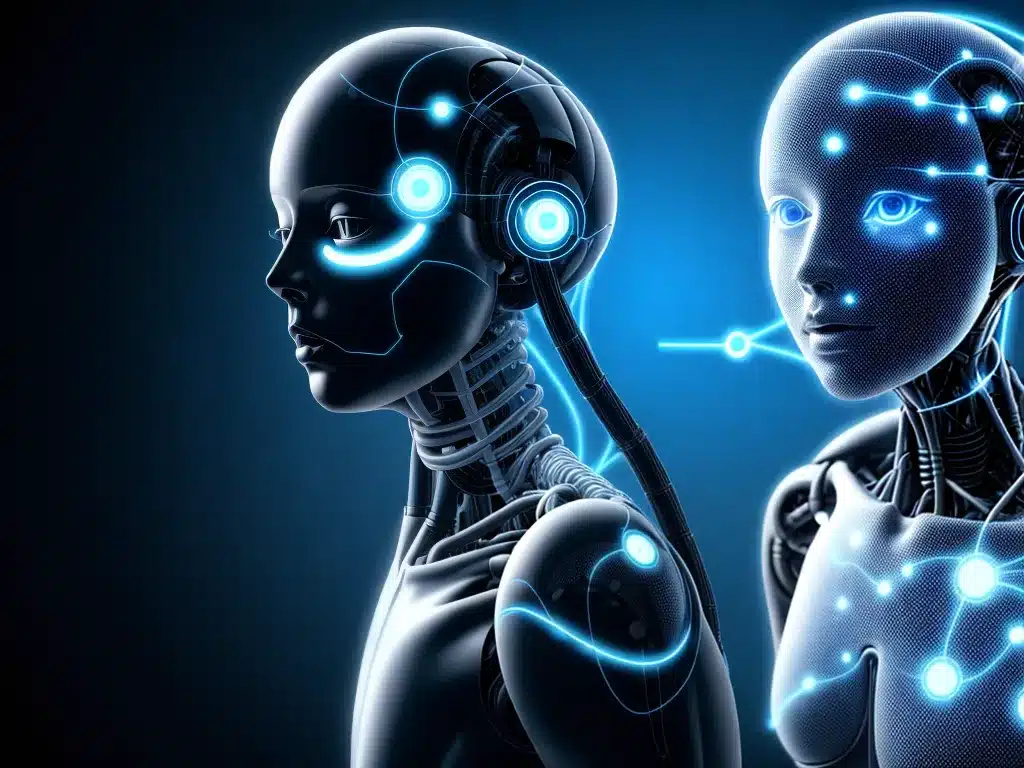

I want to provide an in-depth look at the ways artificial intelligence (AI) is quickly progressing and enhancing computer capabilities. Recent breakthroughs in AI are enabling computers to perform tasks and exhibit behaviors once thought to be exclusively human. This article will explore key AI developments powering the rapid evolution of computers.
The Deep Learning Revolution
Deep learning is a category of AI that is driving much of the recent progress. Deep learning uses neural networks, which are computing systems containing layers of simple nodes inspired by the neurons in the human brain. By processing huge datasets, neural nets can learn on their own to carry out tasks like recognizing images or translating speech.
Some key ways deep learning is advancing computers:
-
Image and object recognition – Neural networks can now identify and categorize images and objects with an accuracy rivaling humans. This allows computers to automatically label images, detect anomalies, or guide autonomous vehicles.
-
Natural language processing – Deep learning algorithms can analyze and generate human-like text. Chatbots and voice assistants like Siri rely on deep learning to understand and respond to natural language.
-
Predictive analytics – Deep learning models can find subtle patterns in data to make predictions. This enables personalized recommendations in services like Netflix or predictive maintenance for industrial equipment.
Deep reinforcement learning combines neural networks with reinforcement learning to allow AI agents to determine the ideal behavior within a specific environment to maximize performance. This is behind innovations like AlphaGo and advanced robotics.
AI Chips and Quantum Computing
Specialized hardware advancements provide the processing muscle for AI’s rapid progress:
-
AI chips – Rather than rely on general-purpose GPUs, companies like Nvidia are designing AI-specific chips optimized for deep learning. This improves performance and efficiency.
-
Quantum computing – Quantum bits (qubits) in quantum computers can represent multiple states simultaneously, allowing them to solve problems intractable for classical computers. Quantum machine learning could greatly accelerate AI.
While still emerging technologies, purpose-built AI chips and quantum computing have potential to remove hardware bottlenecks inhibiting further advancement of AI.
Computer Vision and Image Synthesis
AI is enabling computers to not just recognize objects within images or videos but actually understand the full context and meaning of visual data. Some examples:
-
Scene understanding – Algorithms can now parse everything within an image, determine which objects are where, their relationships, and the activities taking place. This provides computers more human-like visual comprehension.
-
Machine vision – Deep learning has brought breakthroughs in computer vision. Machines can now pick out anomalies, read documents, detect diseases, or visually inspect products on an assembly line.
-
Generative AI – New techniques like deepfakes or GANs (generative adversarial networks) leverage deep learning to generate highly realistic fake images and videos. This has concerning implications but also beneficial creativity uses.
Natural Language Processing Breakthroughs
Processing and generating human language is another area where deep learning is enabling computers to reach new levels of capability:
-
Language translation – AI translation tools like Google Translate can translate between hundreds of languages with accuracy approaching human professionals. This breaks down communication barriers.
-
Sentiment analysis – AI algorithms can now determine the sentiment or emotional tone behind a text. This allows understanding subtle cues in customer conversations.
-
Text generation – Powerful new NLP models like GPT-3 can generate surprisingly human-like text for a given prompt. This has applications in content creation and personalization.
-
Speech recognition/synthesis – Voice assistants use deep learning to recognize speech. New developments allow mimicking any person’s voice realistically.
AI Augmenting Human Abilities
Beyond automating tasks, AI is also augmenting human capabilities:
-
Explainable AI – New techniques help explain AI model behaviors or recommendations. This builds trust in AI and allows human experts to work together with AI.
-
Intelligent user interfaces – AI can create smarter, more responsive user interfaces tailored to each user. For example, AI-powered chatbots can feel more natural and human-like.
-
Creativity enhancement – AI tools can help humans be more creative by generating music or art, formulating ideas, or brainstorming new directions. This expands human creativity.
AI is rapidly advancing computers across all fronts, from basic capabilities like vision and language to higher-level reasoning and interaction. While this creates certain risks, responsible development of AI promises to usher in an age of smarter, more capable computers enhancing human potential. The future of human-computer interaction looks bright as AI’s progress continues apace.












